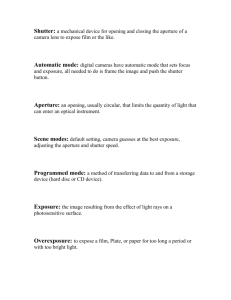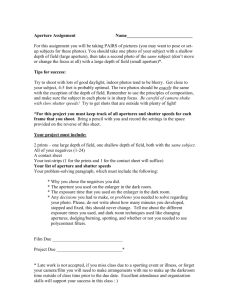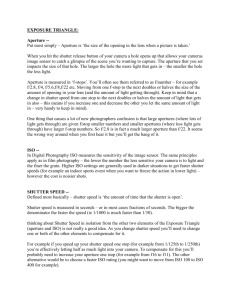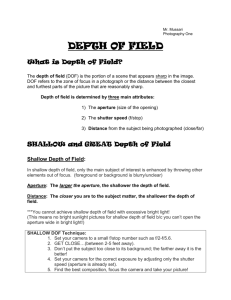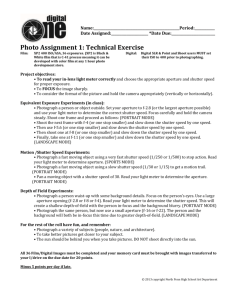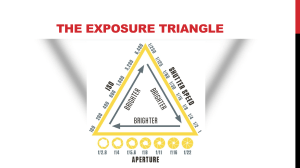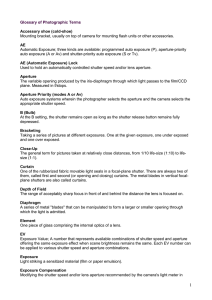Depth of Field – Selective Focus
advertisement
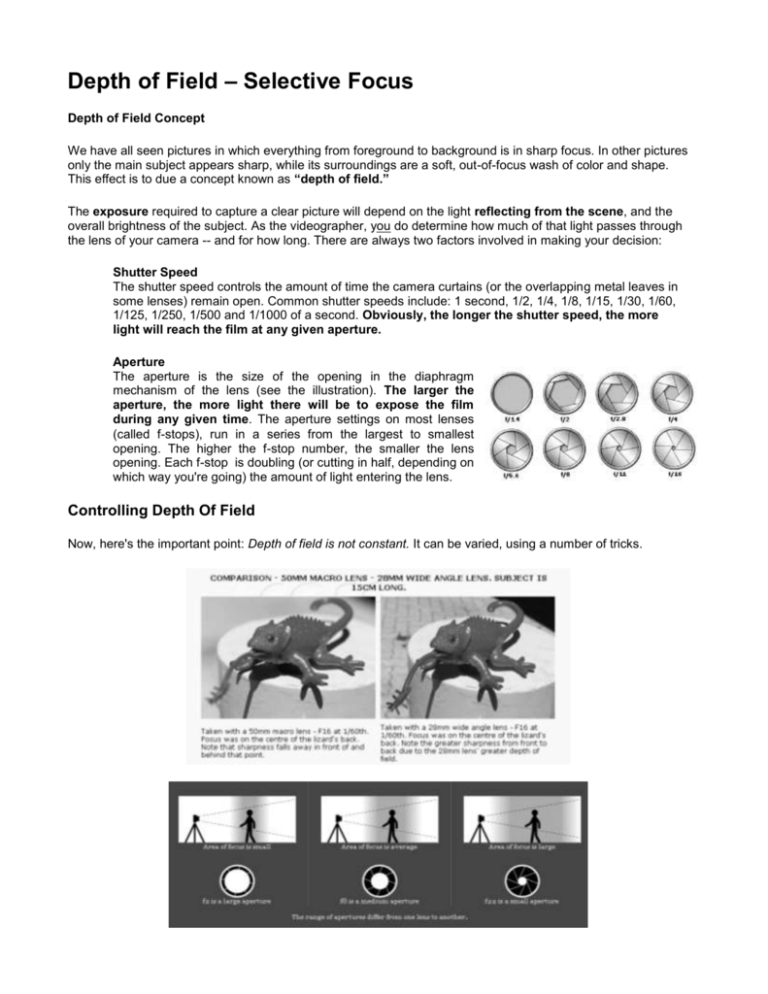
Depth of Field – Selective Focus Depth of Field Concept We have all seen pictures in which everything from foreground to background is in sharp focus. In other pictures only the main subject appears sharp, while its surroundings are a soft, out-of-focus wash of color and shape. This effect is to due a concept known as “depth of field.” The exposure required to capture a clear picture will depend on the light reflecting from the scene, and the overall brightness of the subject. As the videographer, you do determine how much of that light passes through the lens of your camera -- and for how long. There are always two factors involved in making your decision: Shutter Speed The shutter speed controls the amount of time the camera curtains (or the overlapping metal leaves in some lenses) remain open. Common shutter speeds include: 1 second, 1/2, 1/4, 1/8, 1/15, 1/30, 1/60, 1/125, 1/250, 1/500 and 1/1000 of a second. Obviously, the longer the shutter speed, the more light will reach the film at any given aperture. Aperture The aperture is the size of the opening in the diaphragm mechanism of the lens (see the illustration). The larger the aperture, the more light there will be to expose the film during any given time. The aperture settings on most lenses (called f-stops), run in a series from the largest to smallest opening. The higher the f-stop number, the smaller the lens opening. Each f-stop is doubling (or cutting in half, depending on which way you're going) the amount of light entering the lens. Controlling Depth Of Field Now, here's the important point: Depth of field is not constant. It can be varied, using a number of tricks. DOF is basically determined by the iris setting. The smaller the iris aperture, the greater the depth of field. Naturally, in very low-light situations where the iris is open wide, depth of field is significantly reduced and focus becomes quite a challenge. Factors which influence depth of field: Lighting conditions (bright light closes the iris and promotes “Great” DOP where everything is in focus) Shutter Speed (Faster speeds allow for a larger iris setting) Lens angle (Wide angle vs. zoom) – Easier to control when zoomed in (smaller focal range) There are many reasons for wanting to alter the DOF. Perhaps the simplest is to make the audience concentrate on the subject. If you want to reduce DOF, you can: Open the iris (PORTRAIT MODE *) Increase the shutter speed. Zoom-in and move the camera/tripod back from the subject. * Many consumer camcorders have a feature known as "portrait effect". Activating this feature reduces DOF by adding a little shutter, forcing the auto-iris to open wider. As you might expect, you'll have more control if you select shutter speed and iris setting yourself. http://www.andylim.com/photo/depthoffield.htm http://www.mediacollege.com/video/camera/focus/depth-of-field.html
